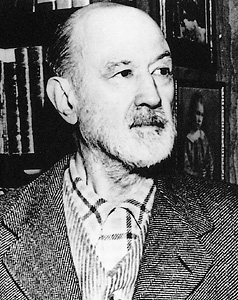Ives, Charles (1874-1954), ranks as one of the greatest and most original American composers. Ives composed his most important music from 1896 to 1921. However, he remained almost unknown to the general public until the last years of his life. Some of Ives’s major works were not introduced to audiences until after his death on May 19, 1954.

In his compositions, Ives emphasizes American folk and popular music, such as ragtime, military marches, patriotic songs, and revival hymns. Ives based some of his music on such subjects as baseball. One of his 27 piano pieces is called Some Southpaw Pitching (1909).
Charles Edward Ives was born on Oct. 20, 1874, in Danbury, Connecticut. Some of his works suggest circus parades and revival meetings that reflect his memories of life in New England. After graduating from Yale University in 1898, Ives entered the insurance business. In 1907, he founded an insurance firm with Julian Myrick that, under their management, became one of the most successful in the United States. He composed at night, on weekends, and during holidays and vacations.
A few of Ives’s compositions were performed as early as 1925. However, most people who enjoyed experimental music did not become aware of his work until about 1939. Ives first won public acclaim for his piano music. His Piano Sonata No. 2 (1909-1915), subtitled Concord, Mass., 1840-1860, shows his unconventional style. Ives named its four movements for New England authors of the mid-1800’s, “Emerson,” “Hawthorne,” “The Alcotts,” and “Thoreau.”
Ives wrote more than 160 songs and many choral works. His chamber music includes Sonata No. 4 (1916?) for piano and violin, known as Children’s Day at the Camp Meeting, and Hallowe’en (1906) for piano and string quartet. One of Ives’s four symphonies, Symphony No. 3 (1904-1911), reflects his more conservative style. It won the 1947 Pulitzer Prize.
Ives’s stylistically adventurous works include The Unanswered Question (1908) for trumpet, flutes, and strings; and the orchestral works Central Park in the Dark (1906-1909?), A Symphony: New England Holidays (1904-1913?), and Three Places in New England (1903-1914?). The monumental Symphony No. 4 (1909-1916?) is the climax of Ives’s experimental style. Its complex counterpoint and multiple rhythms required three conductors at its first performance in 1965.
